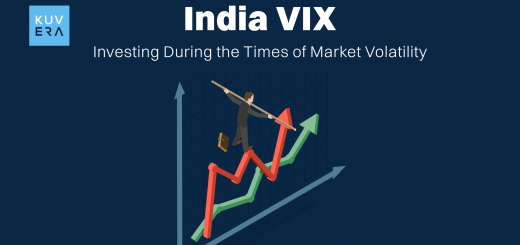In “The Dhandho Investor,” author Mohnish Pabrai presents a compelling framework for value investing inspired by the principles of the Dhandho philosophy, a concept rooted in the entrepreneurial practices of Indian businessmen. The book draws on the wisdom of legendary investors like Warren Buffett and Charlie Munger while infusing it with Pabrai’s unique insights. The key themes and takeaways of the book are:
Value Investing Philosophy
- Mohnish Pabrai argues that many investors overlook intrinsic value in favour of short-term price movements which can lead to missed opportunities in undervalued stocks. He highlights that the market often mis-prices assets due to changing sentiments, economic cycles or temporary issues, creating chances for insightful investors.
- Pabrai emphasizes the importance of patience. Once an undervalued asset is identified, it should be held until its true worth is recognized. This long-term approach contrasts with the common practice of reacting to market trends. He stresses the need for discipline and a focus on fundamental strengths rather than daily market news.
- To effectively assess a company’s value, Pabrai advocates for thorough financial analysis including metrics like revenue, earnings, debt and cash flow. He also highlights the significance of qualitative factors such as competitive advantage and management quality.
- Recognizing that the market is not always efficient, Pabrai points out that emotional reactions can lead to mispricing. During these dislocations, savvy investors can acquire stocks at significant discounts, ultimately leading to substantial returns when the market corrects itself. He provides examples throughout the book of investments where intrinsic value was overlooked, demonstrating how such opportunities can lead to substantial returns when the market corrects itself.
The Dhandho Mindset
- The term “Dhandho” translates to “business” in Gujarati and reflects a mindset centred around risk management and capital allocation, providing a fresh perspective on how to approach investing with a business mindset, aiming for opportunities that minimize downside risk while maximizing upside potential.
- Pabrai asserts that successful investors recognize risk as an inherent aspect of investing. Instead of shying away from it, they learn to embrace risk intelligently. This means evaluating potential investments not only for expected returns but also for the associated risks. By comprehending the nature of these risks—both systemic (affecting the broader market) and specific (tied to individual companies or sectors)—investors can make more informed decisions.
- Effective capital allocation is vital for long-term investment success. Pabrai emphasizes the need to strategically deploy capital to maximize returns, carefully weighing various opportunities against their potential rewards and risks. By applying the principles of Dhandho, investors can better understand the opportunity costs involved, helping them prioritize investments that align with their risk/reward profiles.
- Asymmetric risk/reward profiles, where the potential upside significantly exceeds the downside risk are particularly valuable. He highlights the importance of identifying such opportunities as they can maximize returns. He encourages investors to seek scenarios where even a small chance of substantial gain exists while limiting downside risk. This strategic approach enables investors to build portfolios more likely to deliver favourable outcomes over time.
- Ultimately, adopting a Dhandho mindset means continuously evaluating investments through the lens of risk/reward dynamics. Pabrai advises that investors should consistently consider how to protect their capital while pursuing growth.
Start investing in Index Funds.
Learning from Mistakes
- The book underscores the importance of learning from failures—both personal and those of others—as a key element of successful investing. Pabrai shares anecdotes from his own investment journey, highlighting how mistakes can provide invaluable lessons that shape a more informed and resilient strategy. His experiences resonate with many investors, encouraging them to embrace a mindset that values learning over perfection.
- By analysing past errors, investors can gain critical insights into their decision-making processes, fostering a culture of continuous improvement. The concept of “reverse engineering” successful investments by examining what went wrong in unsuccessful ones further sharpens analytical skills and strengthens risk assessment.
- Ultimately, Pabrai’s emphasis on learning from failures serves as a powerful reminder that even the most seasoned investors encounter challenges. By cultivating a willingness to learn from these experiences, investors can enhance their decision-making capabilities and, ultimately, their success in the market.
Concentrated Portfolio Approach
- In this book, Pabrai advocates for maintaining a concentrated portfolio rather than excessively diversifying investments. He argues that focusing on a smaller number of well-researched opportunities allows investors to develop a deeper understanding of each asset, enhancing decision-making and potentially leading to higher returns.
- By concentrating on fewer investments, investors can dedicate more time to analysing the underlying businesses, their competitive advantages, and market conditions. This thorough research facilitates clearer assessments of each investment’s risks and rewards. He emphasizes that a concentrated approach fosters strong conviction which is crucial during market volatility when investors are confident in their holdings, they are more likely to weather temporary setbacks and benefit when those investments recover.
- He warns against the pitfalls of excessive diversification, known as “diworsification,” where spreading capital too thinly can dilute potential returns and lead to a superficial understanding of each position. This makes it difficult to identify investments that truly align with their risk/reward profiles.
- Ultimately, Pabrai advocates for a disciplined investing philosophy where quality trumps quantity. By concentrating on a select number of high-potential investments, investors can leverage their insights, leading to more favourable outcomes in their portfolios.
Wrapping Up
“The Dhandho Investor” serves as a guide for both novice and experienced investors seeking to navigate the complexities of the stock market. With its blend of philosophical insights and practical strategies, the book encourages readers to adopt a value-oriented approach, grounded in the timeless principles of sound investing. Pabrai’s engaging narrative and thought-provoking ideas make it a valuable addition to the libraries of investors looking to deepen their understanding of value investing and improve their investment strategies. Throughout the book, Pabrai shares real-life investment case studies, illustrating how he applies his principles in practice. These examples serve to reinforce the concepts discussed and provide readers with tangible insights, making the concepts more relatable and applicable.
Interested in how we think about the markets?
Read more: Zen And The Art Of Investing
Watch here: Is UPI Killing the Toffee Business?












